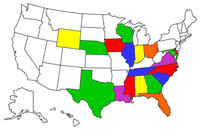Right now I studying to get my Student Certificate and passing the written test. So learning about flight instruments and just wondering Altimeters are $400 - $2000 and need to be set correctly before every flight. Since I already own a very nice GPS that when locked on can give readings including altitude to within 12 feet why the need for a barometric altimeter?
Don't know if I am going to buy or build but Light Sport is my first goal and perhaps all.





 Reply With Quote
Reply With Quote




